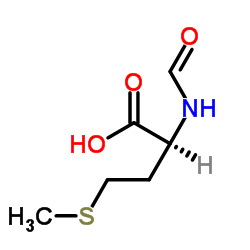Functional roles of TAP and tapasin in the assembly of M3-N-formylated peptide complexes.
T Chun, A G Grandea, L Lybarger, J Forman, L Van Kaer, C R Wang
Index: J. Immunol. 167(3) , 1507-14, (2001)
Full Text: HTML
Abstract
H2-M3 is a MHC class Ib molecule with a high propensity to bind N-formylated peptides. Due to the paucity of endogenous Ag, the majority of M3 is retained in the endoplasmic reticulum (ER). Upon addition of exogenous N-formylated peptides, M3 trafficks rapidly to the cell surface. To understand the mechanism underlying Ag presentation by M3, we examined the role of molecular chaperones in M3 assembly, particularly TAP and tapasin. M3-specific CTLs fail to recognize cells isolated from both TAP-deficient (TAP(o)) and tapasin-deficient mice, suggesting that TAP and tapasin are required for M3-restricted Ag presentation. Impaired M3 expression in TAP(o) mice is due to instability of the intracellular pool of M3. Addition of N-formylated peptides to TAP(o) cells stabilizes M3 in the ER and partially restores surface expression. Surprisingly, significant amounts of M3 are retained in the ER in tapasin-deficient mice, even in the presence of N-formylated peptides. Our results define the role of TAP and tapasin in the assembly of M3-peptide complexes. TAP is essential for stabilization of M3 in the ER, whereas tapasin is critical for loading of N-formylated peptides onto the intracellular pool of M3. However, neither TAP nor tapasin is required for ER retention of empty M3.
Related Compounds
| Structure | Name/CAS No. | Molecular Formula | Articles |
|---|---|---|---|
 |
Formyl-L-methionine
CAS:4289-98-9 |
C6H11NO3S |
|
A novel amino acid analysis method using derivatization of m...
2015-03-21 [Analyst 140(6) , 1965-73, (2015)] |
|
Immunization with f-Met peptides induces immune reactivity a...
2000-01-01 [Tuber. Lung Dis. 80(1) , 5-13, (2000)] |
|
Immunization with gp96 from Listeria monocytogenes-infected ...
2001-12-01 [J. Immunol. 167(11) , 6480-6, (2001)] |
|
Variable immunodominance hierarchies for H2-M3-restricted N-...
2001-01-15 [J. Immunol. 166(2) , 1132-40, (2001)] |
|
Glucose 6-phosphate release of wild-type and mutant human br...
2005-11-18 [J. Biol. Chem. 280(46) , 38403-9, (2005)] |